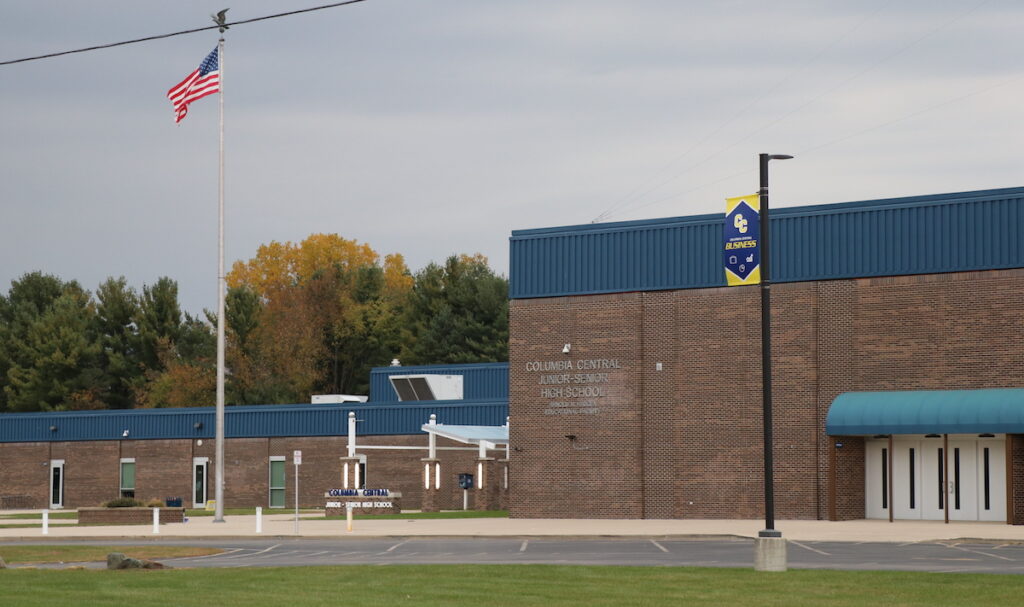
BROOKLYN — A $1.5 million walking and biking trail connecting the village of Brooklyn to the Columbia School District’s elementary and junior/senior high school campuses will give students and the community a safer way to walk.
A collaboration of volunteers, as well as local government and school officials, received notification in August of a conditional commitment of $1 million from the Michigan Fitness Foundation for an official “Safe Routes to School” nonmotorized trail.
According to its website, Safe Routes to School is “an international movement and a federal program to make it safe, convenient and fun for children, including those with disabilities, to bicycle and walk to school.”
Chuck Falahee, a community volunteer and concerned citizen, said the idea for a connecting trail project started around 2016. The focus then was in looking into the possibility of a trail around Lake Columbia like the Spirit Trail around Clark Lake.
“We do a lot of walking and biking, and in using the Spirit Trail at Clark Lake, we said, ‘wouldn’t it be nice if we could do this around Lake Columbia, too,’ ” Falahee said.
The idea evolved by 2019-2020 into connecting the Columbia Central Junior and Senior High School complex, built in the late 1960s, with Brooklyn, when the possibility of a “Safe Routes to School” route came into the picture.
“We thought, ‘if you can connect the school to the village of Brooklyn, it would be a nice opportunity for people to engage in health and wellness, as well as safety in a safe manner,’ ” Falahee said.
The SRTS committee, made up of approximately 10 people over the past several years, received collaborative support from the village, Columbia Charter Township and the school.
“Jae [Guetschow] was very influential in the process” as then-village manager, Falahee said.
Christi O’Neil, then principal at Columbia Central High School, said that, at the time, “all the administrators were interested in creating a safe pathway that would connect all of our campuses and encourage overall health and physical activity.”
A community survey conducted by the school in late 2020 showed strong support, O’Neil said.
The pathway would also “cut down on parent dropoff traffic while encouraging families to be active using the path to school and from school,” she said.
The SRTS concept was familiar to the district, O’Neil said, as the students had participated in the program’s Walk and Bike to School days.
Brooklyn village manager Matt Swartzlander said the primary concern is for the “safety of students walking to the high school along Cement City Road that does not have sidewalks.”
With speed limits of 55 mph between the village and junior/senior high school, Swartzlander said, “it is an unsafe environment for youth to be biking or walking to school.”
The approximately three-mile trail will start on the school property at 11775 Hewitt Road, connect to Turk Road, then follow Cement City Road to the Brooklyn village limits, which becomes Tiffany Street. The trail will follow Chicago Street into downtown, down Monroe Street, north on Broad Street and end at the elementary school campus in the 300 block of School Street.
The Jackson Department of Transportation scoped out and engineered the details on the trail route. In addition to the $1 million commitment in August. In addition, a $450,000 grant from the state of Michigan was also affirmed.
The additional $450,000 needed for the project was secured with the assistance of State Sen. Sue Shink and State Rep. Carrie Rheinghans in the FY2025 Michigan state budget as an infrastructure grant, Swartzlander said. Because of the strict criteria, he added, “there are logistical items we have to fulfill, as well as [needing] approval of funding from the U.S. Congress.”
As part of the criteria, $50,000 must be raised locally. Falahee said $25,000 has already been received from Columbia Charter Township, and that personal and business contributions are being accepted.
Anything raised beyond $50,000 would go toward maintenance, he said.
“We are hoping students and residents will take advantage of the infrastructure once completed, creating and maintaining healthy habits,” he said. “A lot of people believe in this project, in the safety and health of our students and residents.”
The project has moved from the engineering stage to further steps in the realization process, Falahee said.
Swartzlander said the SRTS trail is one of many ongoing enhancement projects happening in the Brooklyn community.
Projects such as the trail “also opens the door to more recreational opportunities for students and the community to have a safe non-motorized pathway to enjoy,” he said. “It is the hope that this trail will be another step in connecting non-motorized pathways throughout the Brooklyn and Irish Hills area, creating a regional walkable community.”
Besides the benefit of a safer environment for district students, Swartzlander said, “it creates an accessible recreational asset for Brooklyn that connects downtown Brooklyn to Lake Columbia and continues to lay the ground work for an expanded trail system in the area.”
Collaborators also have a partnership with the Jackson District Library to add a walking story project along the trail for children to read stories and explore their imaginations while being outdoors.
Swartzlander said there are a “multitude of amazing programmatic ideas and plans that will accompany the project for years to come.”
Officials said the project demonstrates a true community effort.
“The project would not be where it’s at without the involvement of many people over the last three to four years of work,” Swartzlander said.
Construction on the 10-foot-wide concrete path is tentatively set to start in the spring of 2026 with a target completion that fall.

